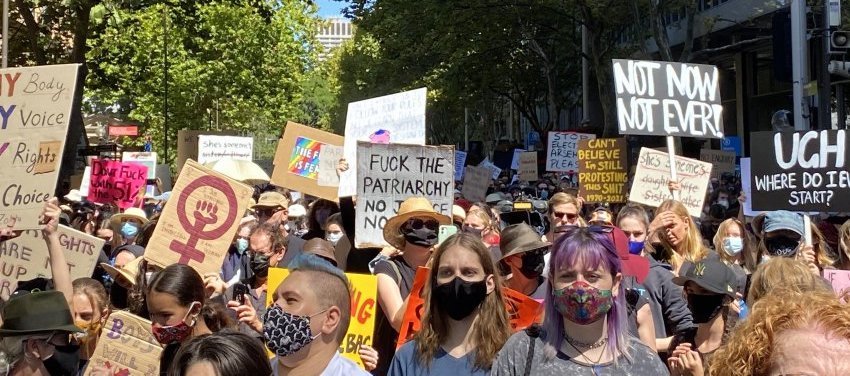
#March4Justice organisers estimate that 110,000 people rallied in 42 locations across Australia on March 15.
This spontaneous outpouring of anger and determination to achieve justice was built in just 10 days: it shows how angry women and their supporters are about how sexual violence continues to be excused, dismissed and normalised.
“A line has been drawn in the sand,” #March4Justice organiser Janine Hendry said. She is right.
Many of the marches were organised by women who had never organised a protest before. Many first-time protesters joined in too, as well as many veterans, some carrying signs questioning whether much had changed since the 1970s.
Much has changed, although misogyny and sexism are part of the system that still has to be changed, as advocate for survivors of sexual assault and activist Grace Tame told rally-goers in Hobart.
Consciousness about the lack of equality and the need to struggle for it is one difference from the second wave of the women’s liberation movement. The new movement to stop sexual violence is starting from a higher level, compared to the 1960s and 70s movement, which started with years of consciousness-raising meetings.
The speed at which the #March4Justice rallies were organised reflects that. The people who put their hands up to become organisers worked through political differences with a view that nothing must get in the way of unified marches.
“The women, united, will never be defeated” was a popular chant. Even more popular was: “Hey, hey, ho, ho, Christian Porter has to go”. His defamation case against journalist Louise Milligan and the ABC, announced that day, added fuel to the fire.
Much was made by the ABC, and other media outlets, about why the organisers chose not to meet with Prime Minister Scott Morrison, who, under pressure and late in the piece, invited them to meet him inside parliament.
It was good to see the organisers ask for and then take direction from supporters; they decided against it. It wasn’t only the optics that would have changed; it would have politically shifted the movement against violence which, at least implicitly, recognises its power as being that of the mass.
It also implicitly recognises that while the new movement wants to make work safe for women inside parliament (and all workplaces), outside parliament, among many people, is where that demand is politically amplified.
As Hendry said: “We have already come to the front door, now it’s up to the government to cross the threshold and come to us. We will not be meeting behind closed doors.”
“Women of Australia do not need more meetings or reports by expert bodies on what needs to be done to end gendered violence. We do need systemic change. And that starts at the top — in Parliament House.”
Video: Thousands at Sydney #WomensMarch4Justice - Green Left.